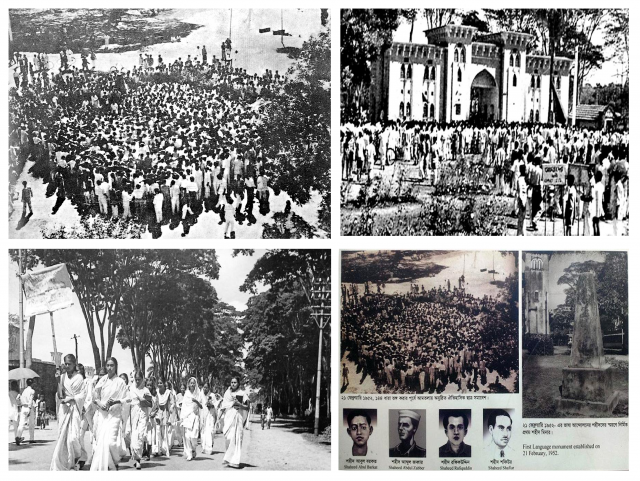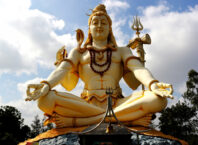The history of the language movement of 1952, we all read in the textbook. From childhood, I read that Shahed Salam, Jabbar, Shafiur and many other people martyred in the 21 February procession. The question arises, how much is that number? There was no accounting for anyone in the newspaper or government of that period?
In the language movement of 1952, we hear the names of five martyrs: Salam, Barkat, Rafiq, Jabbar and Shafiur. To find out who else is dead, we have to turn the page of the book written on our language movement. After so many years of that great language movement, there was no complete list of martyrs. According to the published information, on 21 and 22 February 1952, in the context of language movement, many people were killed in indiscriminate firing by government forces, but they did not recognize all.
On 21 February 1952, a meeting was held in the campus of Dhaka University and the students decided to defy the official ban imposed. The police opened fire in front of the Medical College hostel where the students staged demonstration. Some people were killed. Next day, thousands of men and women thronged the university, Medical College and Engineering College areas to offer prayers for the victims of the police firing. After prayers when they went for a procession, the police opened fire again. More people were killed in the next day.
From that period, 21 February is observed as ‘Shaheed Dibosh’ (Martyr’s Day) whilst the UNESCO declared it officially as “International Mother Language Day” in 1999.
The first memorandum of the language movement in 1952 was published in March, 1953. Its publisher was Mohammad Sultan, the first president of East Pakistan Student Union. The Editor was Hasan Hafizur Rahman. In that book Kabir Uddin Ahmed wrote in a report titled ‘Ekusheyr khatanpunji’,
‘The bodies of the martyrs were taken away from the medical college hospital after the conspiracy…. (the next day) in the morning, a large part of the public burnt the morning news office and kept going towards the news office. Military reckless firing on the procession in front of the press office. Many casualties are here.’
On 23 February 1952, the publication of the language movement ‘Sainik’ was published on Saturday. In the news, police fired at arsonist student gathering at the medical college hostel on Thursday, killing seven people: 3 hundred injured. Besides, according to the report published in the daily Azad, 9 people were killed in firing on 21 and 22 February.
Many bodies were abducted. There was a news article titled ‘Total number of death is 9 on thursday and Friday’ published on 23 February in the Daily Anandabazar, Calcutta, India. On another news, ‘Six people were killed in police firing yesterday’.
Pakistan’s exiled writer Lal Khan wrote in his book ‘Pakistan’s Other Story: The Revolution in 1968-69’ that, 26 people were killed and 400 injured in police firing. The book was published in Lahore in 2008.
According to information provided by Oli Ahad, organizer of Language Movement, no one knows the exact number of people killed on 22 February in Victoria Park (present Bahadur Shah Park), Nawabpur Road and Bangshal Road. Ahmad Rafiq mentioned the names of Abdul Awal, Kishore Ahilyaullah and Sirajuddin among the dead in his book (Ekush theke Ekattor).
Hassan Hafizur Rahman edited ‘Ekushey February’ compilation. In this compilation, Kabir Uddin Ahmed wrote in his ‘Ekushey History’ article, “The death of eight is undoubtedly known.” By this formation, M. Akhtar Mukul has made a list of eight Language Martyrs’. On 21 February, Rafiquddin Ahmad, Abul Barkat, Abdul Jabbar, Abdus Salam and Shafiqur Rahman, Abdul Awal, Ahulahall and unknown boy were included on 22 February in the list. But five people recognized as Language Martyrs’- Abul Barkat, Abdul Jabbar, Rafiquddin Ahmad, Abdus Salam and Shafiur Rahman. They got ‘Ekushey Padak’ in 2000.
Barkat and Jabbar were students of Dhaka University. Rafiq was the son of the owner of Badamtali Commercial Press. They were killed on 21 February 1952. The next day, on 22 February, rickshaw puller Salam and High Court employee Shafiur died in police firing. Two more names are found on the list of deaths on 22 February 1952 – Ahualullah and Abdul Awal. On the website of the International Mother Language Institute, these two names identities are mentioned as Language Martyrs’. Besides, Salahuddin has also been published in different ways as a martyr on 21 February. But they did not recognize. Because of this, the five recognized people are being regarded as Language Martyrs’.
The number of Language Martyrs’ will be unknown to our next generation if the government does not publish the information. The current generation is eager to know this number.

















































































